
A cairn is a human-made pile of stones raised for a purpose, usually as a marker or as a burial mound. The word cairn comes from the Scottish Gaelic: càrn.

Scandinavia is a subregion of Northern Europe, with strong historical, cultural, and linguistic ties between its constituent peoples. Scandinavia most commonly refers to Denmark, Norway, and Sweden. It can sometimes also refer to the Scandinavian Peninsula. In English usage, Scandinavia is sometimes used as a synonym for Nordic countries. Iceland and the Faroe Islands are sometimes included in Scandinavia for their ethnolinguistic relations with Sweden, Norway and Denmark. While Finland differs from other Nordic countries in this respect, some authors call it Scandinavian due to its economic and cultural similarities.
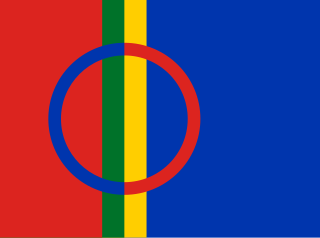
The Sámi are the traditionally Sámi-speaking Indigenous peoples inhabiting the region of Sápmi, which today encompasses large northern parts of Norway, Sweden, Finland, and of the Kola Peninsula in Russia. The region of Sápmi was formerly known as Lapland, and the Sámi have historically been known in English as Lapps or Laplanders, but these terms are regarded as offensive by the Sámi, who prefer their own endonym, e.g. Northern Sámi Sápmi. Their traditional languages are the Sámi languages, which are classified as a branch of the Uralic language family.
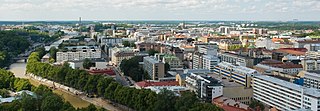
Turku is a city in Finland and the regional capital of Southwest Finland. It is located on the southwestern coast of the country at the mouth of the River Aura. The population of Turku is approximately 202,000, while the metropolitan area has a population of approximately 311,000. It is the 6th most populous municipality in Finland, and the third most populous urban area in the country after Helsinki and Tampere.

Henry was a medieval English clergyman. He came to Sweden with Cardinal Nicholas Breakspeare in 1153 and was most likely designated to be the new Archbishop of Uppsala, but the independent church province of Sweden could only be established in 1164 after the civil war, and Henry would have been sent to organize the Church in Finland, where Christians had already existed for two centuries.

Legends car racing is a style of auto racing designed primarily to promote exciting racing and to keep costs down. The race car bodyshells are 5/8-scale replicas of American automobiles from the 1930s and 1940s, powered by Yamaha XJ1250, FJ1200 or, starting in 2018, FZ-09 (water-cooled) engines. The worldwide sanctioning body for legends car racing is INEX.

The 69 Eyes is a Finnish rock band. It was founded in 1989 in Helsinki by vocalist Jyrki 69, guitarists Bazie, Timo-Timo and bassist Archzie, joined in 1992 by drummer Jussi 69; the lineup never changed since then. The 69 Eyes music blends gothic rock with glam metal and rock 'n roll in a style that was dubbed "goth 'n roll".

Chud or Chude is a term historically applied in the early East Slavic annals to several Baltic Finnic peoples in the area of what is now Estonia, Karelia and Northwestern Russia. It has also been used to refer to other Finno-Ugric peoples.
The "Well to Hell", also known as the "Siberian hell sounds", is an urban legend regarding a putative borehole in the Siberian region of Russia, which was purportedly drilled so deep that it broke through into Hell. It was first attested in English as a 1989 broadcast by a U.S. domestic religion-based TV broadcaster, Trinity Broadcasting Network.
The various nations of the region include the Arabic-speaking countries of the Middle East, the Iranian traditions of Persia, the Jewish music of Israel and the diaspora, Armenian music. Azeri Music, the varied traditions of Cypriot music, the Turkish music of Turkey, traditional Assyrian music, Coptic ritual music in Egypt as well as other genres of Egyptian music in general. It is widely regarded that some Middle-Eastern musical styles have influenced Central Asia, as well as the Balkans and Spain.
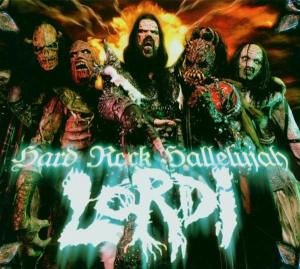
"Hard Rock Hallelujah" is a song by Finnish hard rock band Lordi. It represented Finland in the Eurovision Song Contest 2006, held in Athens, resulting in the country's only ever victory in the contest. It reached the No. 1 spot in Finland and reached the top 10 in eight other European countries. In the United Kingdom, the song peaked at No. 25.

The First Swedish Crusade was a possibly mythical military expedition in the 1150s to Southwestern Finland by Swedish King Eric IX and English Bishop Henry of Uppsala.

Mallee, also known as Roe Botanical District, is a biogeographic region in southern Western Australia. Located between the Esperance Plains, Avon Wheatbelt and Coolgardie bioregions, it has a low, gently undulating topography, a semi-arid mediterranean climate, and extensive Eucalyptus mallee vegetation. It has an area of 73,975.59 square kilometres (28,562.13 sq mi). About half of the region has been cleared for intensive agriculture. Recognised as a region under the Interim Biogeographic Regionalisation for Australia (IBRA), it was first defined by John Stanley Beard in 1980.
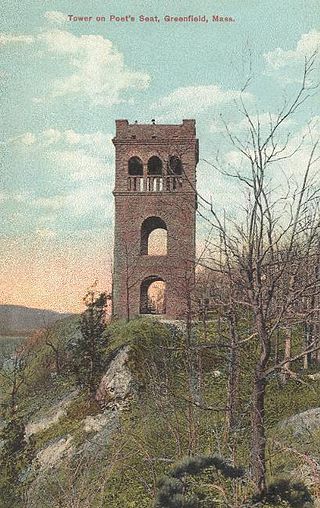
The Pocumtuck Range, also referred to as the Pocumtuck Ridge, is the northernmost subrange of the Metacomet Ridge mountain range of southern New England, itself a subrange of the Appalachian Mountains. Located in Franklin County, Massachusetts, between the Connecticut River and the Deerfield River valleys, the Pocumtuck Range is a popular hiking destination known for its continuous high cliffs, scenic vistas, and microclimate ecosystems.
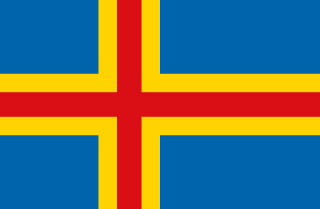
Åland is an autonomous and demilitarised region of Finland. Receiving its autonomy by a 1920 decision of the League of Nations, it is the smallest region of Finland by both area (1,580 km2) and population (30,129), constituting 0.51% of Finland's land area and 0.54% of its population. Its only official language is Swedish and the capital city is Mariehamn.

Kuopiorock is a Finnish two- to three-day rock music festival held annually in Väinölänniemi, Kuopio, at the turn of July and August. The first event was held in 2003. In 2012, the event celebrated its 10th anniversary and the festival was held on 27–28 July.

Nunnavuori is a 63-meter tall hill in Finland it is located between the Runosmäki residential area and the Impivaara Sports Center. From the top of the hill, the southern and southeastern parts of Turku are visible.

Kukkarokivi is Finland's largest glacial erratic, located in Ruissalo, Turku.
Church Builders Killi and Nalli is a public sculpture in Raisio, Finland. Created by the sculptor Harry Kivijärvi in red granite, it stands in the park area between Raisio City Hall and the Church of St. Martin.
















